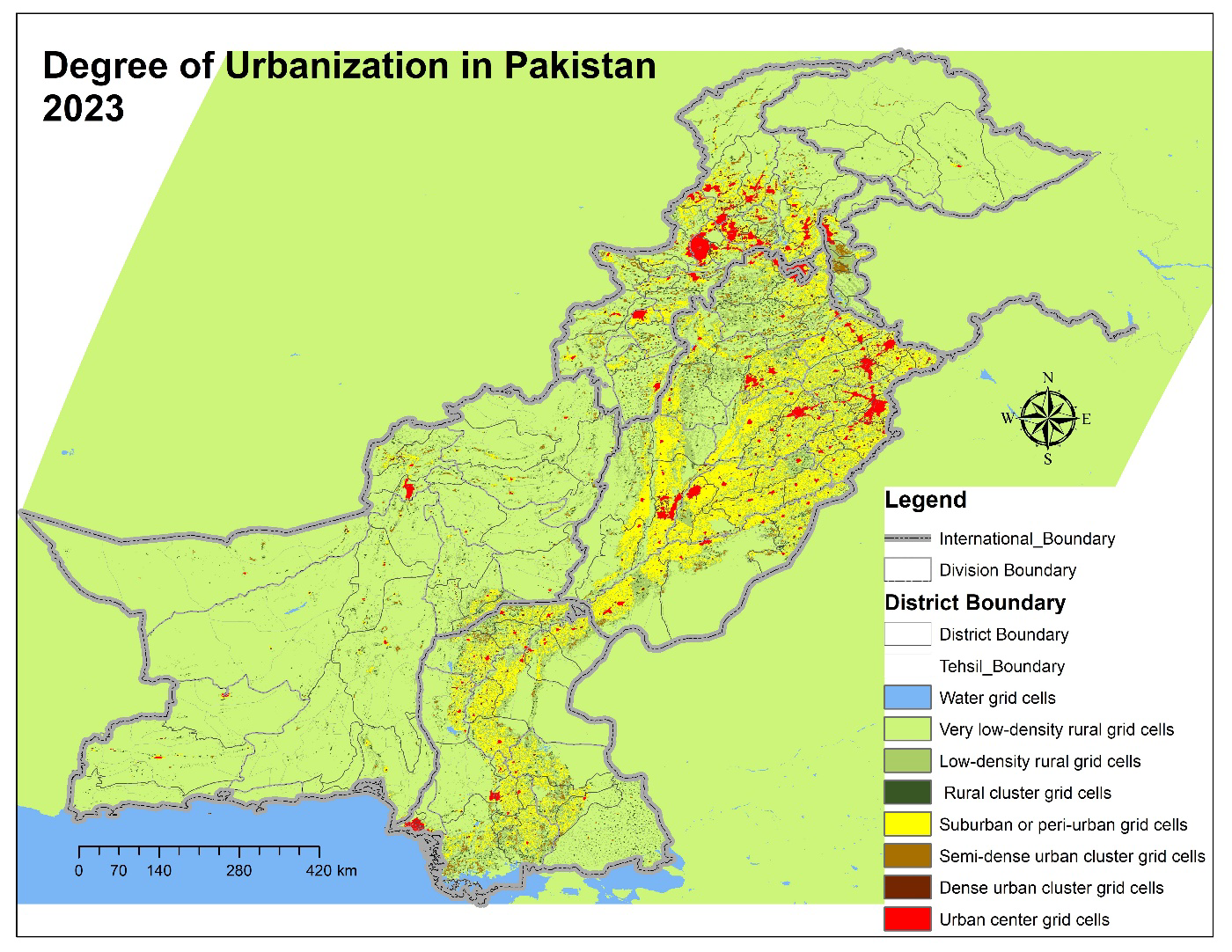Optimizing Urban Delimitations in Pakistan Through Exploratory Data Analytical Approach
DOI:
https://doi.org/10.62019/abbdm.v4i02.12Keywords:
Urban Areas, Pakistan, GIS technology, redefining criteriaAbstract
In Pakistan, the lack of a standardized definition for urban areas hampers effective urban planning and policy development. Thus, this research study employs data science by integrating the Geographic Information System (GIS) employed to find the weightage of the urban threshold that can redefine the urban areas in Pakistan. With diverse socio-economic and demographic factors considered, exploratory data analysis (EDA) incorporates population density, infrastructure development, economic indicators, and land use patterns to demark urban boundaries. As there is no consensus on what an “urban area” in Pakistan should be, this study takes a data-focused approach to determine the criteria that best capture the complexities of urbanization. It has been done through spatial analytics and statistical modeling in a data science framework. The integration of a data science framework enables to set-up threshold for development of urban landscape. The proposed redefinition of urban areas has implications for urban planning, resource allocation, and policy development, fostering a more accurate representation of the urban fabric in Pakistan. This study contributes to filling the existing gap in defining urban areas in Pakistan. It identifies new urban percentages that more accurately reflect the socio-economic and demographic realities of Pakistan's urban landscape. The findings shows that there are 36 percent of urban grid cells retrieved from the EDA approach. The outcomes provide a foundation for informed decision-making and policy interventions, aligning urban definitions with Pakistan's urbanization process's complex and dynamic nature. This research will also ensure a comprehensive understanding of urban landscapes in the face of diverse challenges particularly in developing countries.

Downloads
Published
Issue
Section
License

This work is licensed under a Creative Commons Attribution-NonCommercial-NoDerivatives 4.0 International License.






